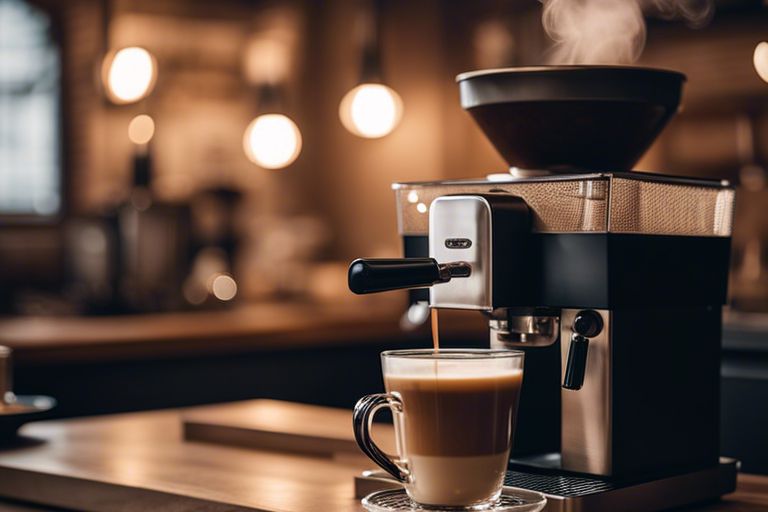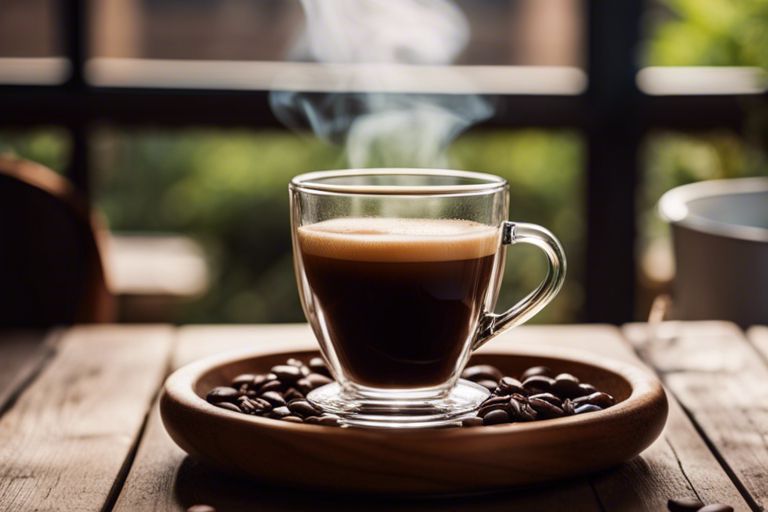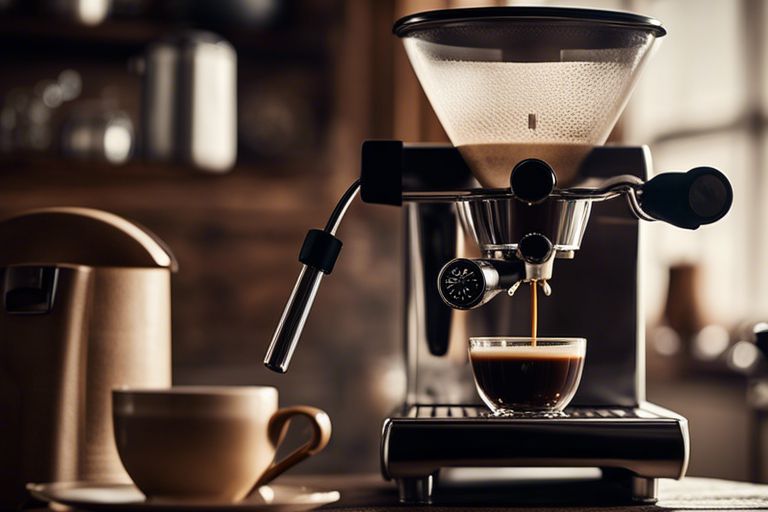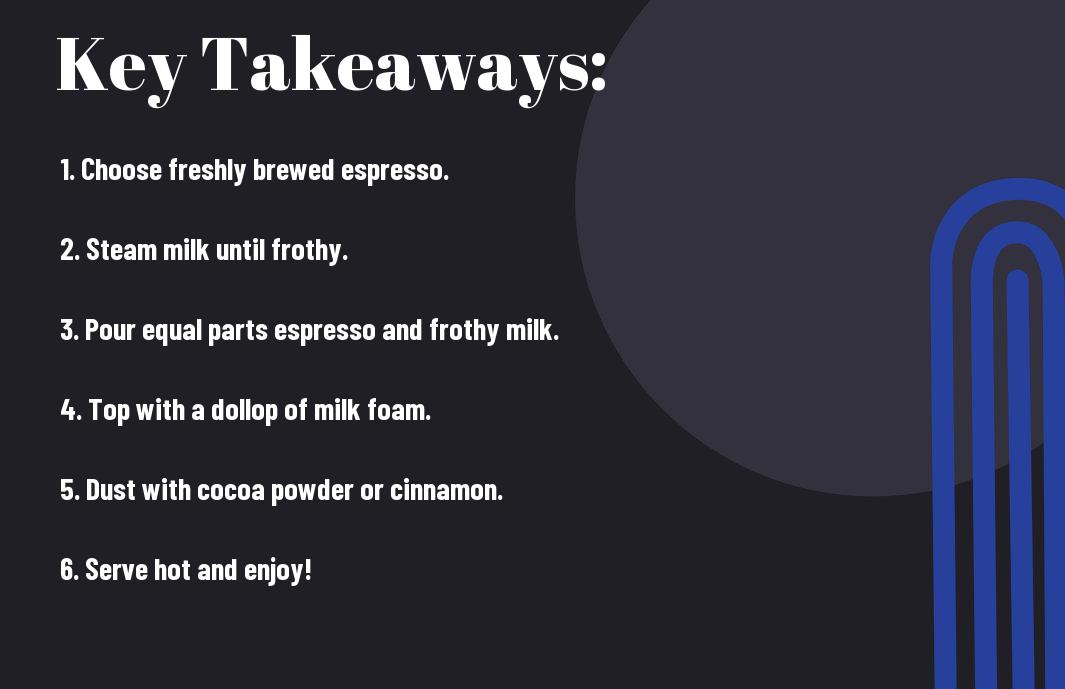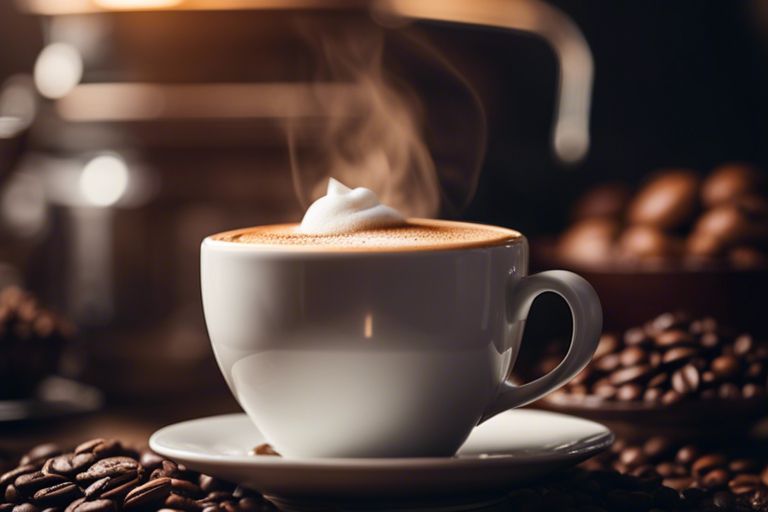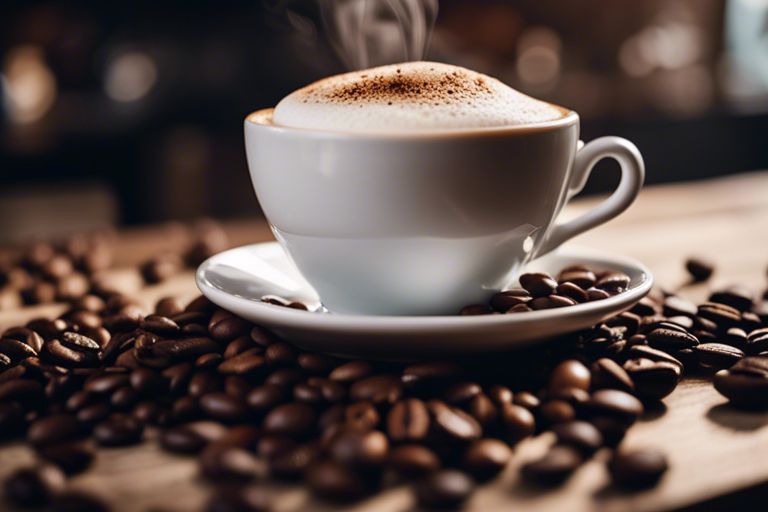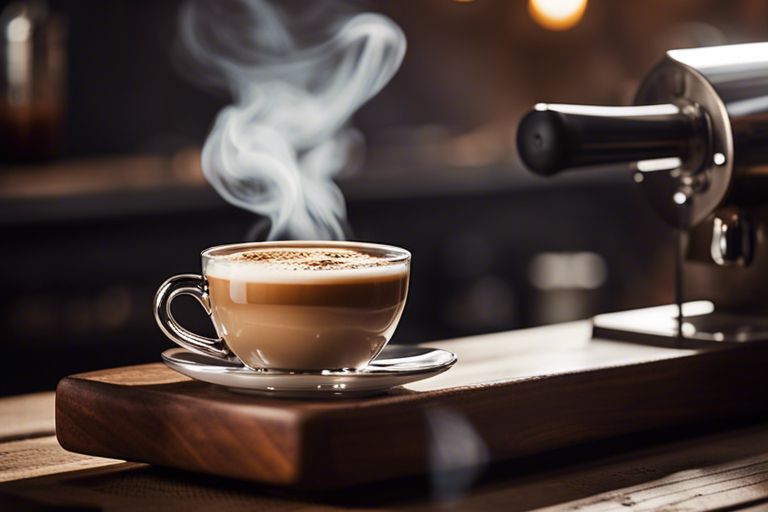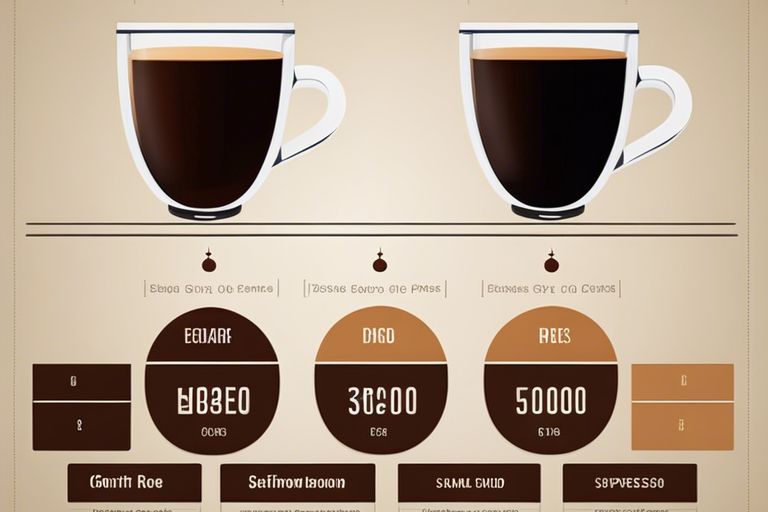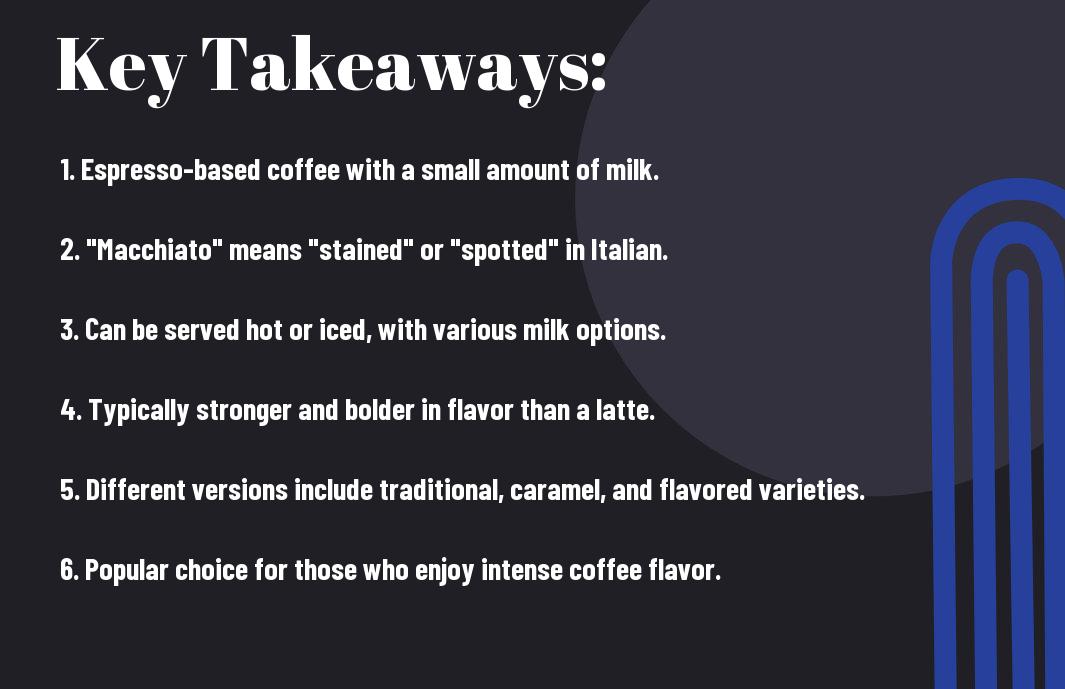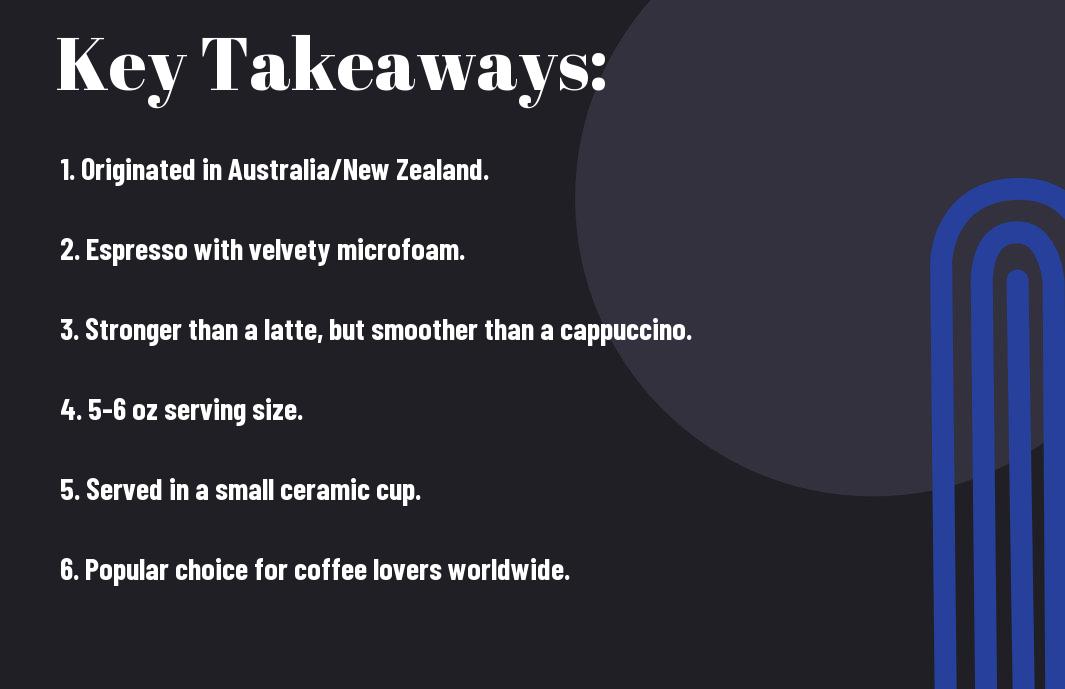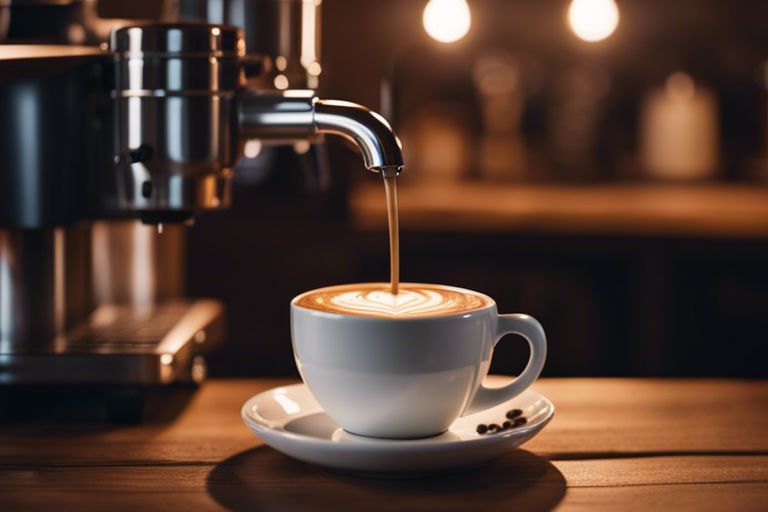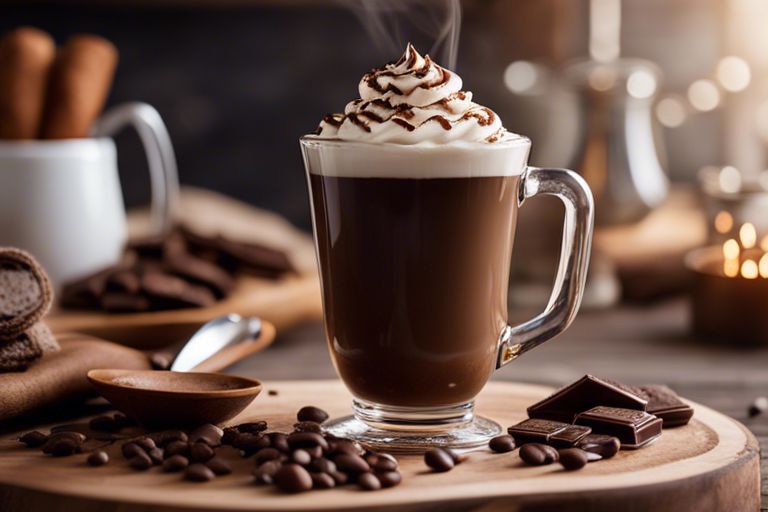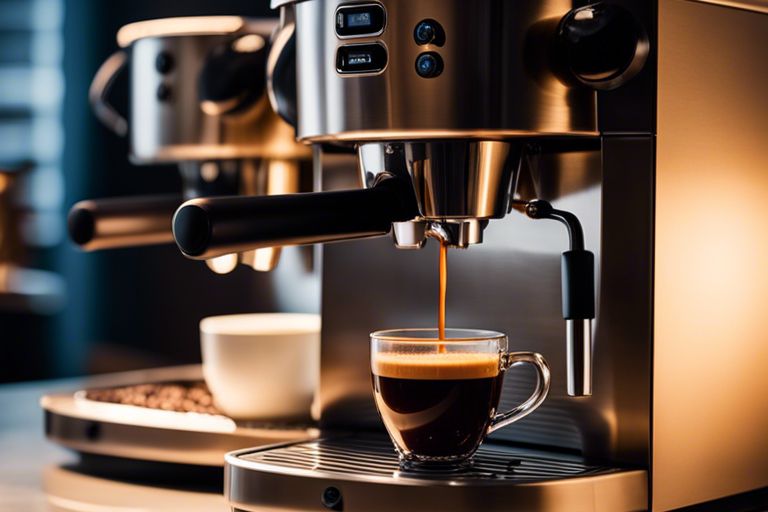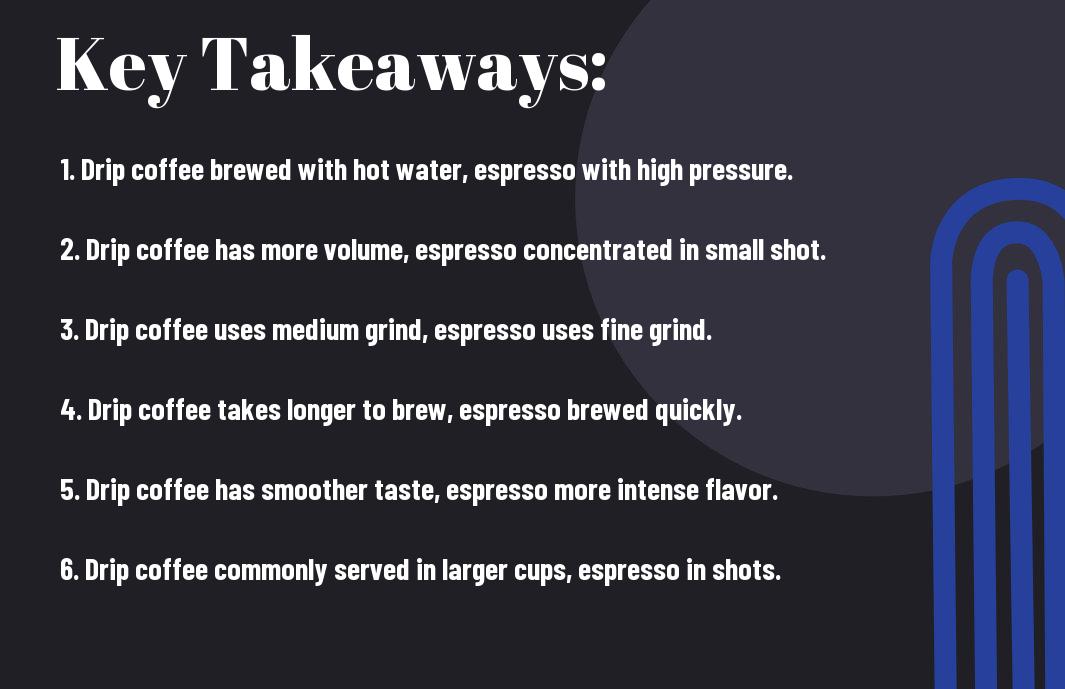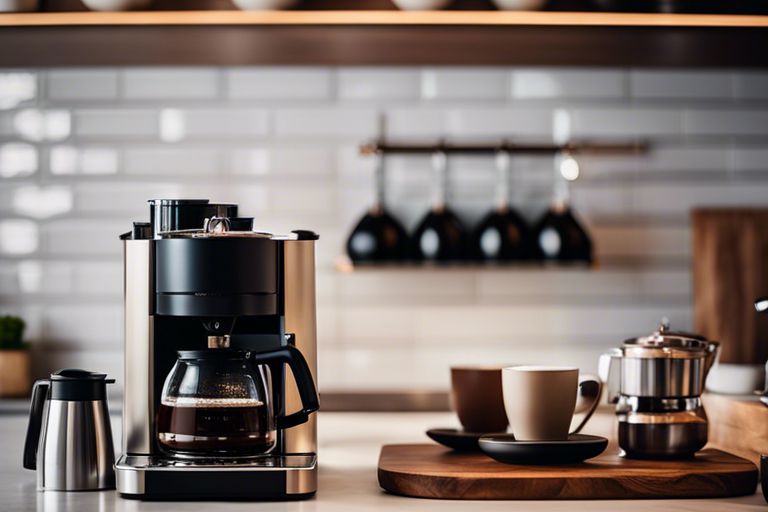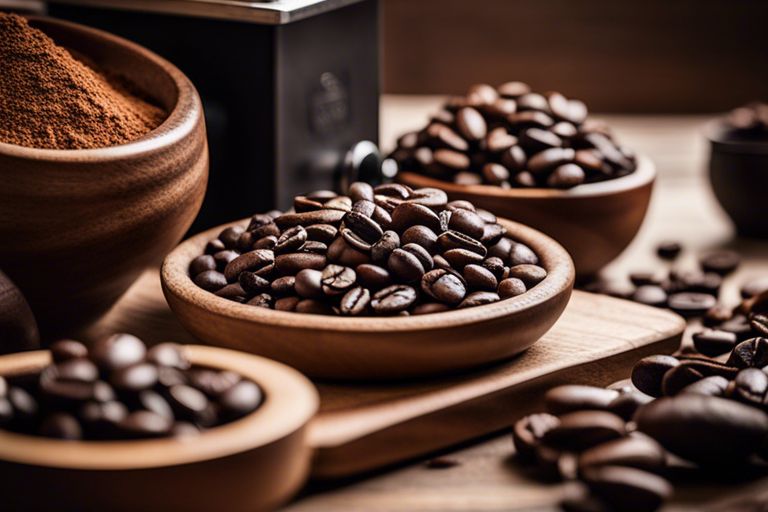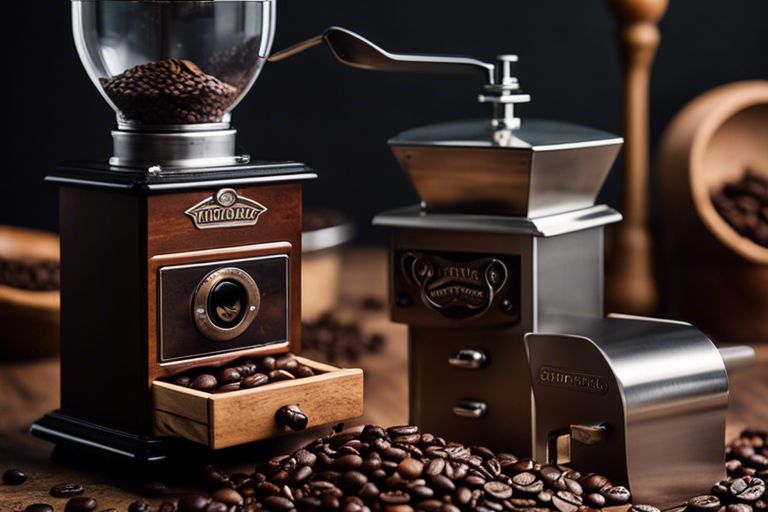Ah, the lovely cortado – a delicate balance of milk and espresso that warms the soul with each sip. Today, we shall initiate on a delightful journey to learn the art of crafting this Spanish coffee favorite. With a touch of steamed milk and a shot of espresso, we will create a harmonious union that is sure to delight your taste buds. So, grab your favorite cup and let’s look into the world of cortados together!
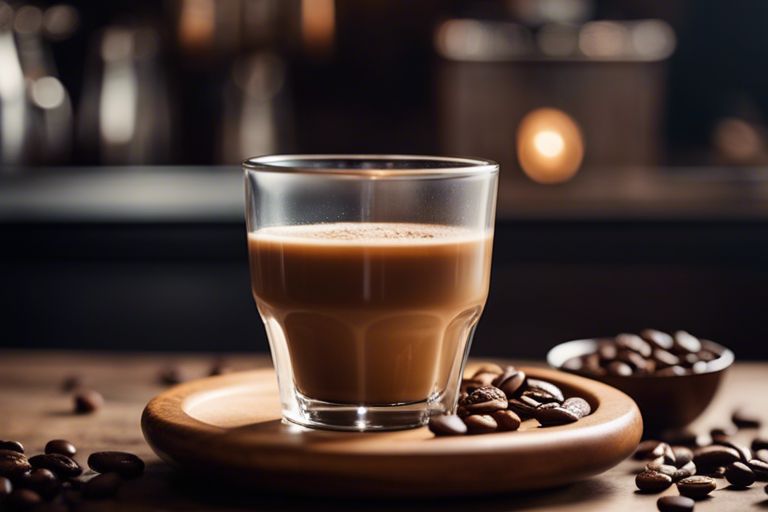
Key Takeaways:
- Start with espresso: Brew a strong shot of espresso as the base for your cortado.
- Equal parts espresso and milk: Pour an equal amount of steamed milk to balance the strong espresso flavor.
- Serve in a small glass: Traditionally, a cortado is served in a small glass to showcase its equal parts of espresso and steamed milk.
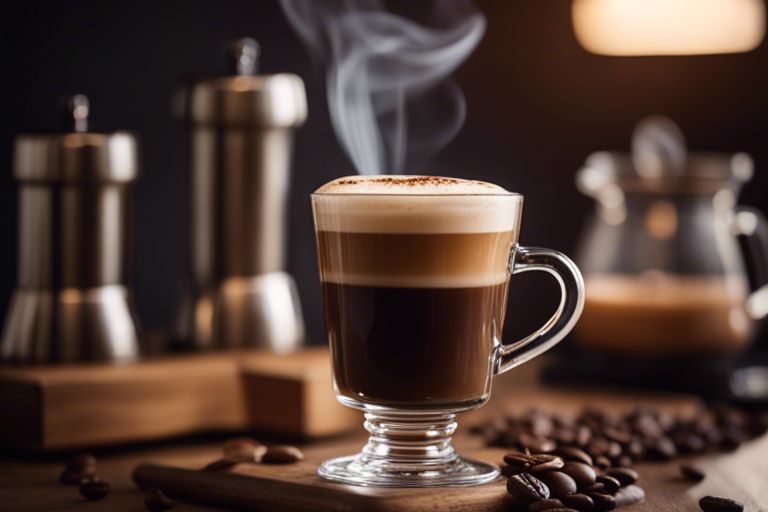
Gathering Ingredients
While making a delicious cortado may seem like a simple task, the key lies in the quality of the ingredients you choose. To start your coffee-making journey, let’s gather the necessarys – coffee beans and fresh milk.
Essential Coffee Beans
Essential to a fantastic cortado is the selection of the right coffee beans. Look for a medium to dark roast with a balanced flavor profile that complements the creamy texture of the milk. Beans from regions like Colombia, Brazil, or Ethiopia work wonderfully for this espresso-based drink. Investing in freshly roasted beans will elevate the taste of your cortado.
Fresh Milk Options
Any cortado enthusiast will tell you that the type of milk you use can make or break your coffee experience. Opt for high-quality, fresh milk, preferably whole milk or 2% for a rich and velvety texture. If you’re looking to explore dairy alternatives, consider oat milk or almond milk for a creamy and nutty flavor profile that pairs well with espresso.
Plus, if you prefer a dairy-free option, coconut milk or soy milk can offer a subtle sweetness that balances the boldness of the coffee. Note, the fresher the milk, the better it will froth and enhance the overall taste of your cortado.
Equipment Essentials
Some imperative equipment you’ll need to make a delicious cortado includes an espresso machine, a grinder, fresh coffee beans, a scale, and a milk pitcher.
Espresso Machine Basics
For the perfect cortado, it’s important to have a good quality espresso machine. Look for a machine that allows you to control the brewing temperature and has a built-in steam wand for frothing milk. Consistency in temperature and pressure is key to extracting a rich and balanced espresso shot.
Steam Wand Techniques
Machine steamed milk is imperative for a cortado, giving it a creamy texture and slightly sweet flavor. To froth milk properly, start by purging the steam wand to remove any residual water. Then, position the steam wand just below the surface of the milk in your pitcher. Create a vortex by swirling the milk to achieve a velvety microfoam. Be mindful not to overheat the milk, as it can alter the flavor profile of your cortado.
Understanding the nuances of steam wand techniques will help you achieve the perfect milk texture for your cortado, enhancing its overall taste and mouthfeel. Mastering this skill will elevate your cortado-making abilities and impress both yourself and your guests with a café-quality drink.
Pulling the Perfect Shot
Tamping and Loading the Espresso Machine
For the perfect cortado, the first step is to ensure you are tamping your espresso correctly and loading the espresso machine with precision. Tamping involves pressing down on the coffee grounds in the portafilter to create a level, compact puck. This step is crucial to ensure that the water flows evenly through the grounds during extraction. Make sure to apply consistent pressure while tamping to achieve the best results.
Extracting the Ideal Espresso
For extracting the ideal espresso shot for your cortado, it’s important to pay attention to the extraction time and volume. The ideal extraction time for a cortado is typically around 20-30 seconds. During this time, the espresso machine forces hot water through the compacted coffee grounds to extract a rich, flavorful shot. Keep an eye on the volume of the espresso coming out of the machine to ensure you are getting the right amount for a balanced cortado.
This step is crucial in achieving the perfect balance of flavors and aromas in your cortado. The right extraction time and volume will determine the strength and intensity of the espresso, which forms the foundation of this beloved coffee beverage.
Steaming and Frothing Milk
Heating and Texturing Milk
To achieve the perfect cortado, one must start by properly heating and texturing the milk. Begin by pouring cold milk into a stainless steel steaming pitcher. Submerge the steam wand into the milk, positioning it just below the surface. Turn on the steam wand and heat the milk to around 150-155°F, ensuring not to scald it. As the milk heats, you’ll notice it start to expand and create small bubbles.
Creating Silky Microfoam
Silky microfoam is the hallmark of a well-crafted cortado. To achieve this, lower the steam wand slightly into the milk to continue frothing and swirling it in a circular motion. The goal is to incorporate air into the milk while breaking up large bubbles, creating a velvety texture. When done correctly, the milk should have a glossy sheen and feel smooth and velvety to the touch.
Plus: Creating silky microfoam may take some practice to master, but don’t be discouraged! Experiment with different techniques, milk temperatures, and steam wand positions to find the method that works best for you. The effort you put into perfecting this skill will undoubtedly elevate your cortado-making game.
Combining Coffee and Milk
Your What is a Cortado? And How Do You Make One? journey begins with the harmonious union of coffee and milk. The process of combining these two key ingredients is crucial to creating the perfect cortado.
Ratio of Espresso to Milk
An crucial element in mastering the art of making a cortado is getting the ratio of espresso to milk just right. The ideal cortado balance is achieved when you combine equal parts of espresso and steamed milk. This careful ratio ensures that the boldness of the espresso flavor is complemented by the velvety texture of the milk, creating a harmonious and well-rounded flavor profile.
Pouring Techniques for a Velvety Finish
Velvety
With a gentle and steady hand, pour the steamed milk into the espresso in a slow and controlled manner. This pouring technique is key to creating a velvety finish on top of your cortado. By slowly integrating the milk into the espresso, you allow the two elements to blend seamlessly, resulting in a smooth and creamy texture that is characteristic of a well-made cortado.
Customizing Your Cortado
All coffee enthusiasts know that the beauty of a cortado lies in its simplicity, but that doesn’t mean you can’t get creative with it! Here are some ways you can customize your cortado to suit your taste preferences:
Flavor Profile Options (Vanilla, Cinnamon, etc.)
Cortado, as a classic espresso drink, pairs beautifully with a touch of vanilla or a sprinkle of cinnamon. You can add a few drops of vanilla syrup or a pinch of ground cinnamon to give your cortado a subtle twist. These flavor additions complement the rich espresso and creamy milk, elevating your coffee experience to a whole new level.
Garnish Ideas (Cocoa Powder, Whipped Cream, etc.)
Creamy, velvety, and delicious, the cortado offers a blank canvas for delightful garnishes. Dusting the foam with cocoa powder adds a hint of chocolatey goodness, while a dollop of whipped cream brings a touch of decadence. Get creative with your garnishes to personalize your cortado and make it a true reflection of your taste preferences.
Another popular garnish idea for cortados is a sprinkle of nutmeg or a drizzle of caramel syrup. These additions can enhance the flavor profile of your cortado, adding depth and complexity to each sip. Experiment with different garnishes to find the perfect combination that suits your palate.
Summing up
Following this instructional guide on how to make a cortado, you can now confidently prepare this delicious coffee drink at home. Remember to start with equal parts espresso and steamed milk to achieve the perfect balance of flavors and textures. Whether you enjoy your cortado in the morning or as an afternoon pick-me-up, this guide has equipped you with the knowledge and skills to craft the perfect cup every time.
FAQ
Q: What is a cortado?
A: A cortado is a delicious coffee drink that originated in Spain. It consists of equal parts espresso and warm milk, creating a balanced and flavorful beverage.
Q: What equipment do I need to make a cortado?
A: To make a cortado, you will need an espresso machine, an espresso grinder, a steaming pitcher, and a milk frother.
Q: How do I make the perfect shot of espresso for a cortado?
A: To make the perfect shot of espresso for a cortado, use freshly ground coffee beans, a calibrated espresso grinder, and make sure to tamp the espresso grounds evenly and firmly before brewing.
Q: How do I steam milk for a cortado?
A: To steam milk for a cortado, fill the steaming pitcher with cold milk, submerge the steam wand just below the surface of the milk, and create a whirlpool motion to heat and froth the milk until it reaches the ideal temperature.
Q: How do I assemble a cortado?
A: To assemble a cortado, pour the freshly brewed espresso into a pre-warmed glass, gently add the steamed milk on top, and finish with a thin layer of milk foam. Serve and enjoy your homemade cortado!
The Ultimate Guide to Brewing the Perfect Cup of Black Coffee at Home
